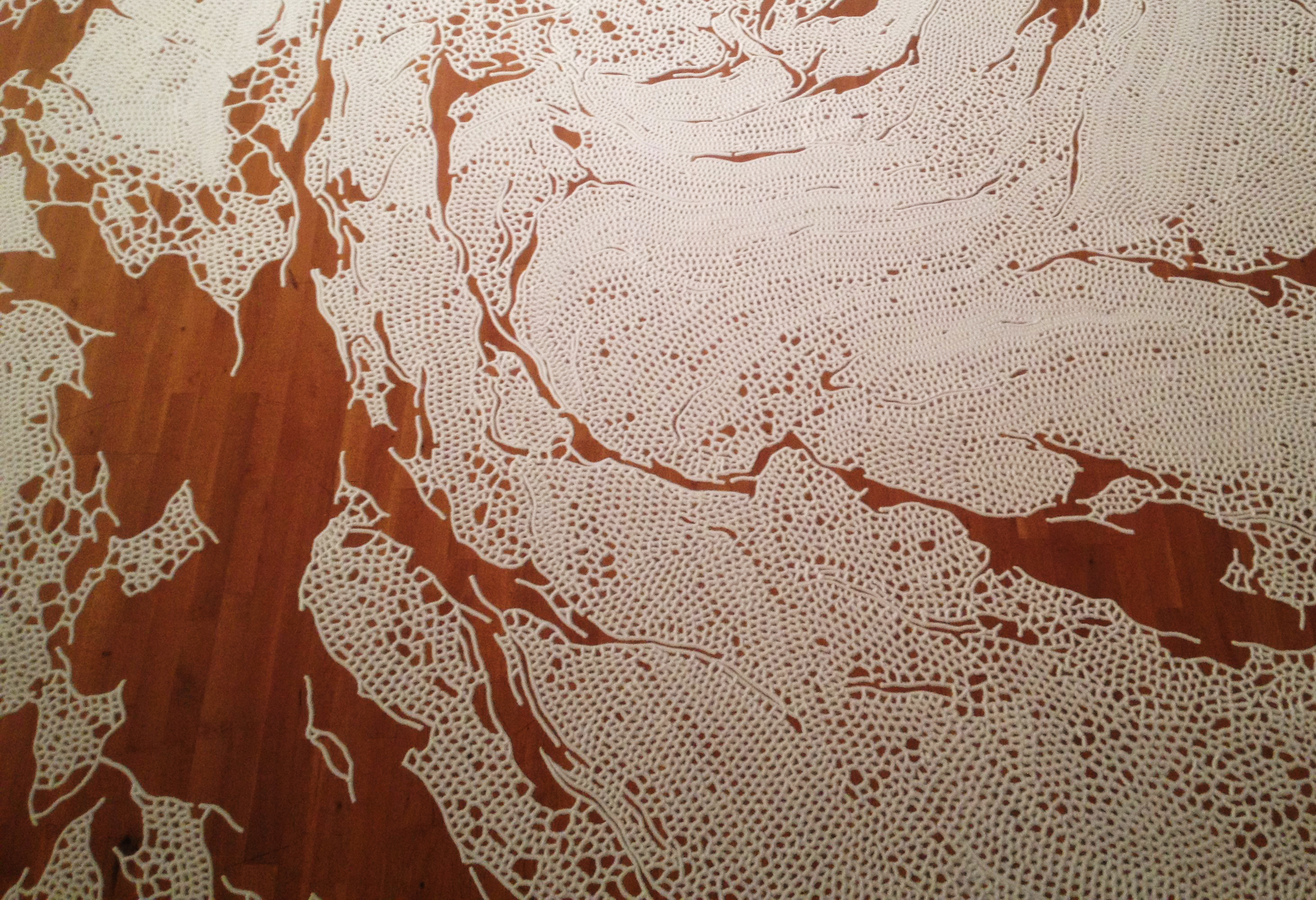Artist’s salt designs will eventually “˜Return to the Sea’

Large-scale installations of salt art at LMU by Motoi Yamamoto. This piece is called “Floating Garden.”
By Margaret Davis
Nov. 20, 2012 3:36 p.m.
“Return to the Sea”
Laband Art Gallery, Loyola Marymount University
FREE
Until Dec. 8 (Gallery closed Nov. 21-25 for Thanksgiving)
A shaker of Morton’s salt sits on the kitchen table of many families across the country. It adds flavor to dinner and even inspires some girls to wear a yellow raincoat to be the iconic Morton Salt girl for Halloween. But artist Motoi Yamamoto has an entirely unconventional use for the seasoning: He creates masterpieces with it.
Yes, he uses hundreds of pounds of Morton’s salt to create elaborate designs on flat surfaces, such as floors. His most recent exhibit, “Return to the Sea,” is currently on display at the Laband Art Gallery at Loyola Marymount University.
Yamamoto first started using salt to create art after the death of his sister, who passed away from brain cancer at the age of 24. In Japanese culture, salt is associated with purification and is believed to attract good-natured spirits and repel evil ones. It is frequently used during funeral rituals and sumo wrestlers ceremoniously toss salt before a match. Because of the symbolism associated with it, Yamamoto began to create designs with salt in remembrance of his sister and and in the process, learned to accept her death.
The design Yamamoto created for “Return to the Sea” consists of many circular cell-like shapes. He said these symbolize the small, everyday memories of a person’s everyday life; in his case, many allude to memories with his sister. The small segments in the piece represent memories such as her eating his custard pudding without asking or the two of them fighting over cheating in card games.
Yamamoto’s salt designs have an aspect of improvisation to them because of the way salt responds to the amount of moisture in the air. Because of this, Yamamoto cannot always predict the way a line of salt he draws will work out. He must constantly adapt his design to his location as he is creating it.
He also has a set standard to never fix his mistakes. In allusion to life’s unexpected incidents that can never be erased, Yamamoto said he never does anything to change a line or shape that was unintended.
In addition to photos of a few of his pieces, the exhibit features a 33-by-26-foot work titled “Floating Garden,” which Yamamoto created on the floor of the gallery by using an oil bottle to create an intricate design of spirals, loops and lines with 275 pounds of Morton’s table salt. The design took him approximately 102 hours during a two-week period to complete.
When the exhibit closes on Dec. 8, Yamamoto will invite the people of the communities in which his work appears to come and dismantle his art. This is where the significance of the title, “Return to the Sea,” comes in. After dismantling the project, people are encouraged to put the salt into their own containers so they can take it with them to bring the salt back to the ocean and throw it into the water.
Yamamoto said he intends for his work to come full cycle: After the salt is thrown into the water, it will support the life of the creatures living in it. Then, the salt is returned once again as humans may eat creatures that swim in the water into which the salt was thrown. Yamamoto suggests the possibility that he will end up using the same salt again in the future.


